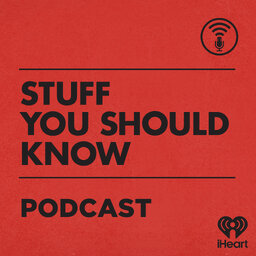Fallout Shelters: Probably Useless (Let’s Never Find Out)
The advent of nuclear weapons and the Cold War kicked off a craze in the US for building rec rooms with foot-thick reinforced walls and outfitted with survival rations and board games. Would they work? Probably not.
Learn more about your ad-choices at https://www.iheartpodcastnetwork.com
 Stuff You Should Know
Stuff You Should Know


